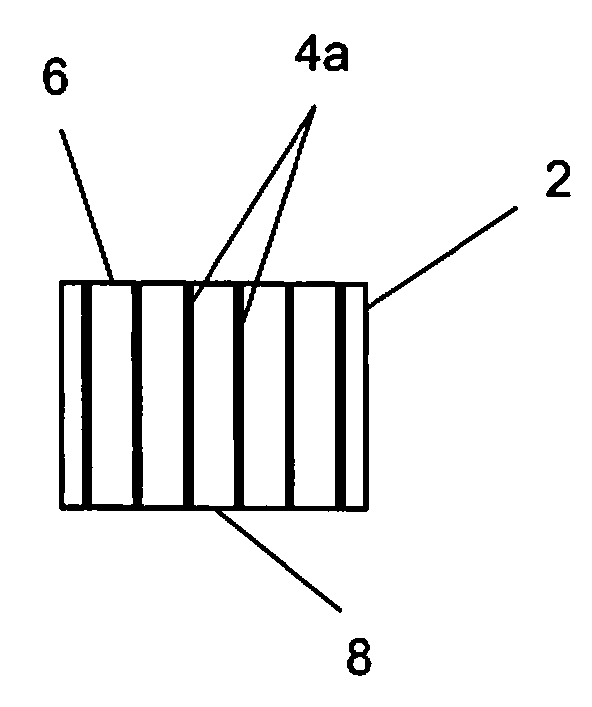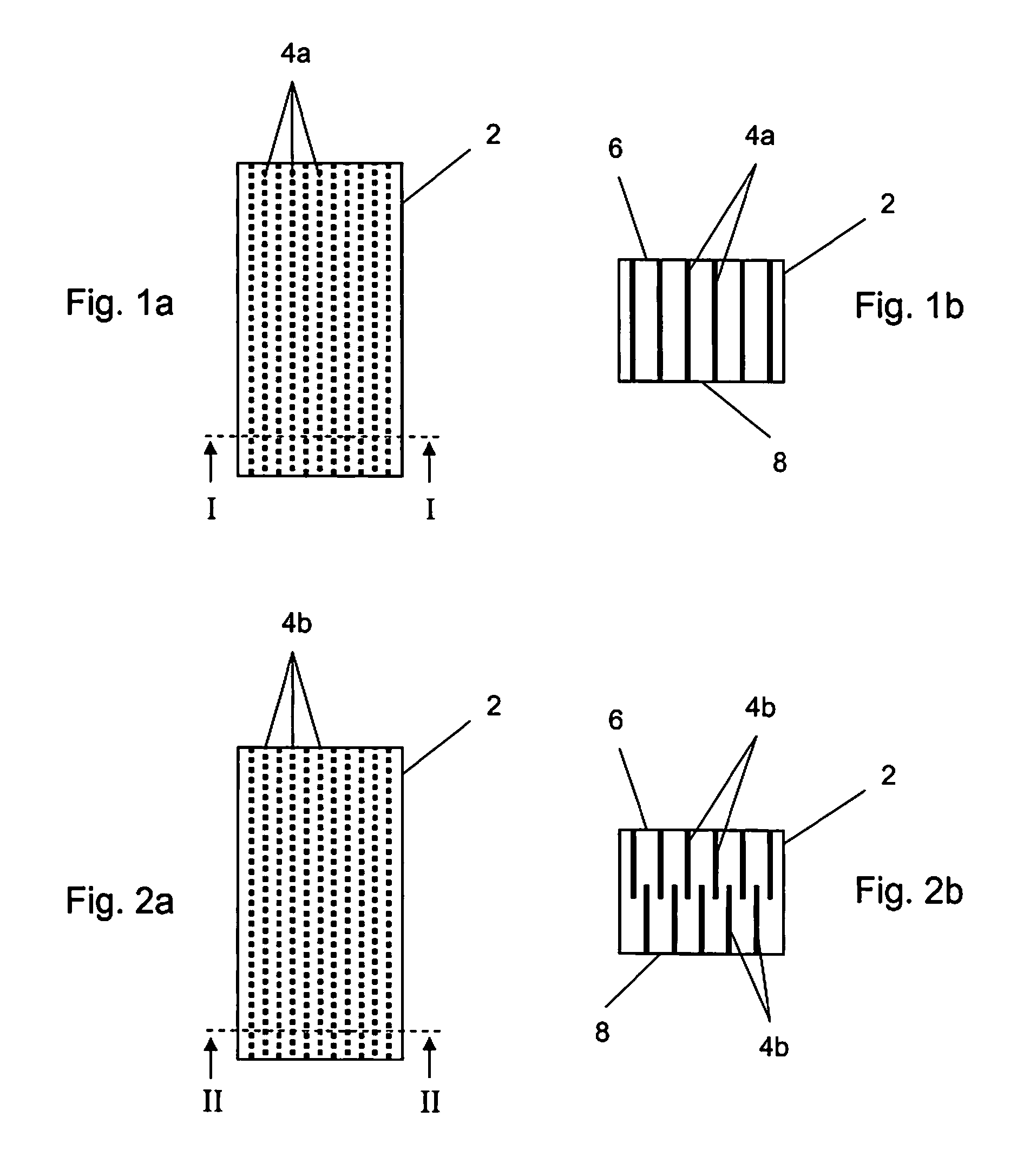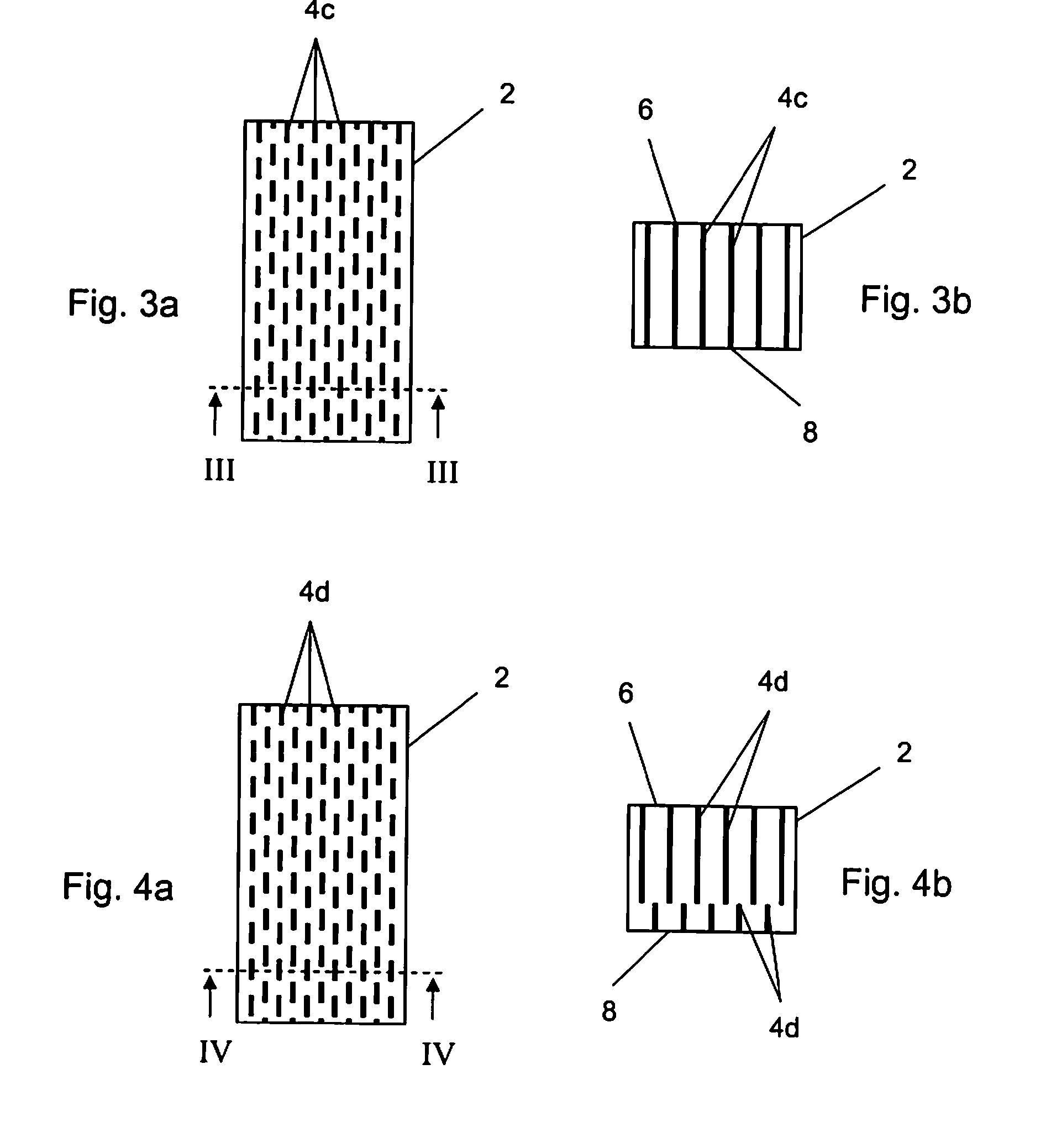Sealing Band
- Summary
- Abstract
- Description
- Claims
- Application Information
AI Technical Summary
Benefits of technology
Problems solved by technology
Method used
Image
Examples
Example
[0026]FIG. 1a shows a top view of a first embodiment of an inventive joint-sealing tape. The joint-sealing tape consists of flexible foam 2, which can be formed out of a relatively open-cell foam material with high air permeability. Preferably, however, it is a relatively closed-cell foam material with low permeability and small pore cross sections. Foams with air permeability values which are between the two extremes just mentioned above can also be used within the scope of the present invention. Preferred foam materials are polyurethane and polyethylene foams which are able to recover their original state completely or almost completely after having been compressed. The dimensions of the joint-sealing tape are not shown to scale in FIG. 1a, because a joint-sealing tape usually extends much farther in the longitudinal direction and is therefore wound up into a roll. The inventive joint-sealing tape shown in FIG. 1a therefore represents merely a section of the overall length of the ...
Example
[0029]The second embodiment shown in FIGS. 2a and 2b differs from the first embodiment in that the upper notches 4b, which extend into the foam 2 from the top surface 6 of the foam strip, extend only about half-way through the thickness of the foam 2, whereas identical notches 4b, offset from the first set of notches, extend about half-way through the thickness from the bottom surface 8 of the foam 2. As a result, the notches do not have to penetrate as deeply into the foam 2, but it is still ensured that the foam 2 will be completely saturated.
Example
[0030]An especially advantageous third embodiment of the joint-sealing tape is shown in FIGS. 3a and 3b. The difference from the embodiment of FIGS. 1a and 1b is that the notches 4c are lengthened in the longitudinal direction of the joint-sealing tape and thus form strip-like, longitudinal notches. As a result, the perforated component of the foam 2 is increased in the longitudinal direction, and superior saturation of the foam 2 with the impregnate is achieved. The length of the individual strip-like longitudinal notches will usually be in the range of a few millimeters, but almost any length can be selected. The value chosen will depend on, among other things, the dimensions of the foam.
PUM
 Login to view more
Login to view more Abstract
Description
Claims
Application Information
 Login to view more
Login to view more - R&D Engineer
- R&D Manager
- IP Professional
- Industry Leading Data Capabilities
- Powerful AI technology
- Patent DNA Extraction
Browse by: Latest US Patents, China's latest patents, Technical Efficacy Thesaurus, Application Domain, Technology Topic.
© 2024 PatSnap. All rights reserved.Legal|Privacy policy|Modern Slavery Act Transparency Statement|Sitemap



